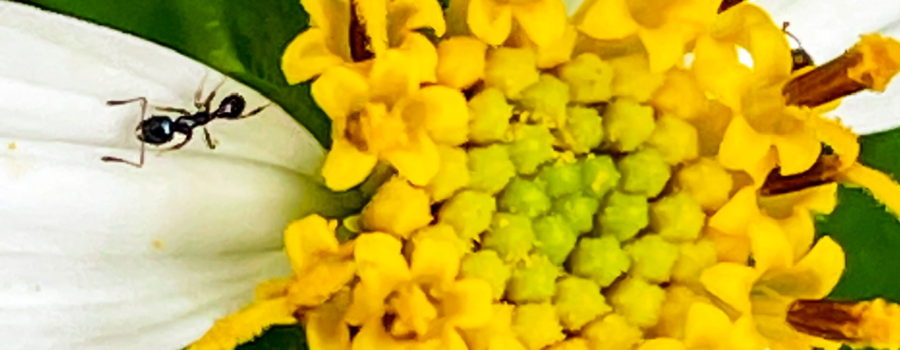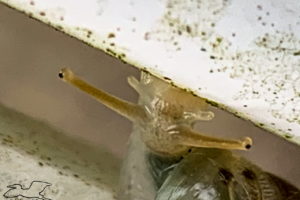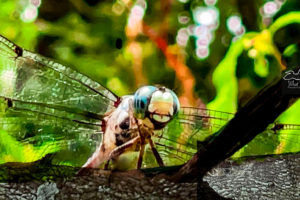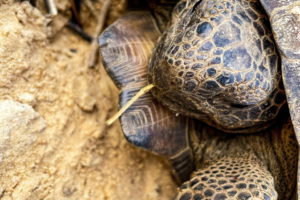Pavement Ants are a Common but Interesting Species

Wherever I go to look for wild things to observe and photograph I run into ants. There are over fifty types of ants that live in Florida, but luckily most of them don’t cause any real troubles to people. I have already introduced you to the Florida carpenter ants, which are only found in Florida and southern Georgia (but there are plenty of other carpenter ants in other areas). I ran into them frequently last year on the passion fruit vines. I still see them pretty regularly on other plants that I am photographing, since they are very fond of flower nectar, but they aren’t the only ones that like it. Probably the most common ant we have around here is the pavement ant. Pavement ants are quite a bit smaller than carpenter ants, and if you look at them carefully through a microscope or a macro lens you can see differences in their coloration and body structure, too.

Pavement ants live just about everywhere in North America and Europe. They are actually native to Southern Europe, but were brought to the new world about 200 years ago. Interestingly, pavement ants from all over the United States have a very similar genetic structure, which makes geneticists believe that they all originated from one colony or a couple of closely related colonies and then spread outwards. No one is quite sure how they got here, but they are definitely here to stay! Luckily, for the most part they are not harmful to people. The workers can bite and the formic acid in those bites can mildly sting, but they are essentially harmless. If you tend to be allergic, like I am, you may get some itchy swelling, but although a bit annoying, it isn’t harmful. Similarly, pavement ants will sometimes build nests in homes or other buildings, and again may be annoying, but they don’t actually cause any damage.

Pavement ants usually prefer to live outside where they can build their nests under ground near downed trees, stones, or other solid objects. They have become known as pavement ants because of their habit of building nests under sidewalks, under building foundations, or under paved patios. They will build ventilation tunnels that emerge between sections of the pavement. When not under pavement, these small ants prefer to build their nests in areas with little or no vegetation. Their nests can be easily identified by the crater shaped piles of excavated sand around the entrance hole. Their colonies can be between 3000 and 10,000 strong, usually with only one queen (there can be two or more queens in very large colonies). Colonies are very territorial and will defend an area up to 40 square meters or more.

Besides sometimes building nests in buildings, the other thing that will bring these guys inside is food. Pavement ants are omnivores and will really pretty much eat anything. They have a particular love for greasy or fatty foods and for sweet foods. The reason that I often find them on wildflowers is that love of sweets (I.e. they are looking for nectar). They may not be major pollinators like bees and butterflies, but they are helpful in spreading pollen from plant to plant. Besides nectar they will eat decaying plant material, dead insects or other carrion, seeds, honey, and aphid honeydew among other things. When a worker finds a food source he will mark a trail with a chemical scent so that other workers can also find it and harvest it. Although these little ants can be annoying and even problematic inside buildings, when outside they actually have a pretty interesting lifestyle and complex social structure. One of my videos even features them rebuilding their nest after a heavy rain.
If you enjoy beautiful nature photography and artwork and entertaining content about nature and animals then consider subscribing to our blog!





Recent Comments